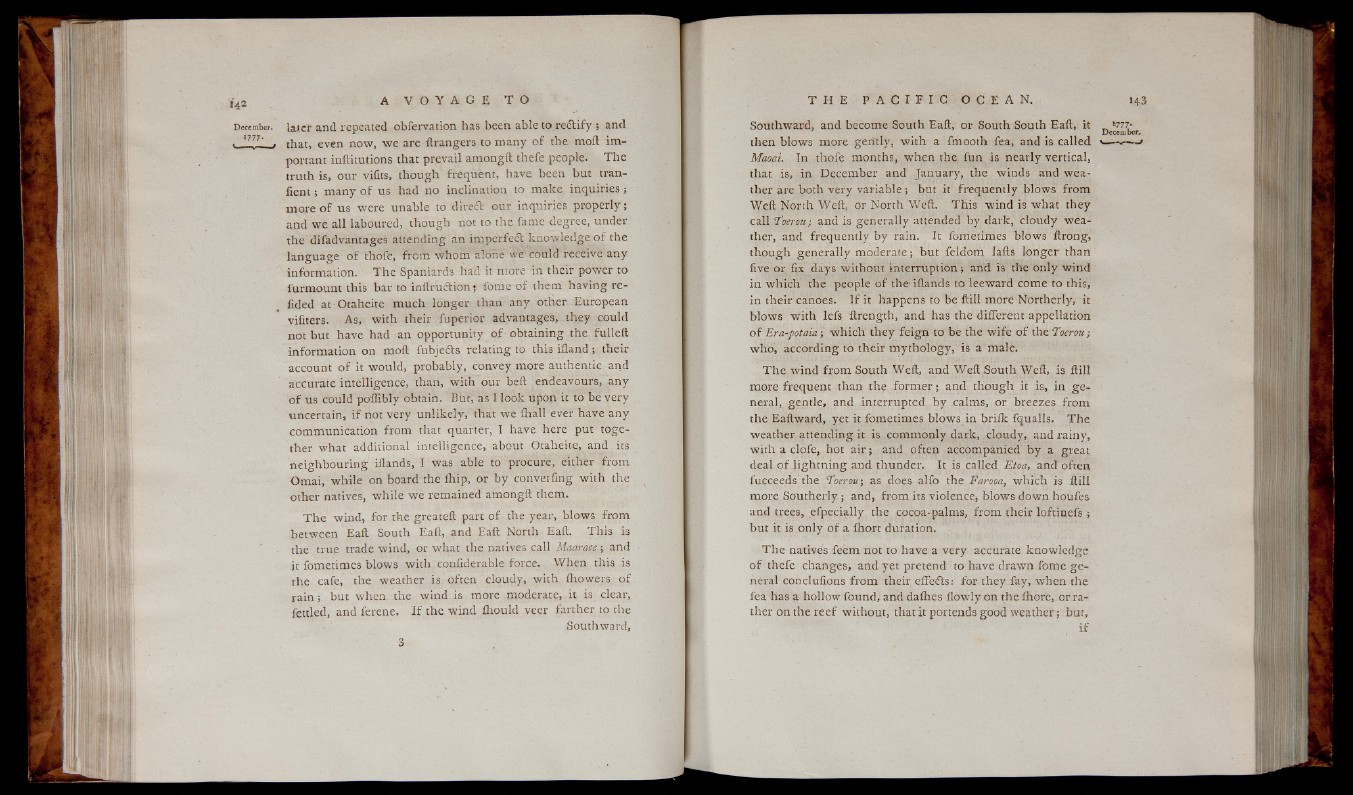
later and repeated obfervation has been able to re ctify ; and
that, even now, w e are ilrangers to many o f the moft important
inftitutions that prevail amongft thefe people. T he
truth is, our viiits, though frequent, have been but tran-
f ie n t ; many o f us had no inclination to make in q u ir ie s ;
more o f us were unable to d ireft our inquiries p ro p e r ly ;
and we all laboured, though not to the fame degree, under
the difadvantages attending an im p e r fe ft knowledge o f the
langu ag e o f thofe, from whom alone we could receive any
information. T h e Spaniards had it more in their power to
furmount this bar to in ftru ftion ; fome o f them having re-
fided at Otaheite much longer than any other European
vifiters. As, w ith their fuperior advantages, they could
not but have had an opportunity o f obtaining the fulleft
information on moft fu b je fls relating to this iilan d ; their
account o f it would, probably, convey more authentic and
accurate intelligence, than, with our beft endeavours, any
o f us could poiEbly obtain. But, as I look upon it to be ve ry
uncertain, i f not ve ry un lik e ly , that we (hall ever have any
communication from that quarter, I have here put together
what additional intelligence, about Otaheite, and its
n eigh bou rin g iflands, I was able to procure, either from
Omai, while on board the ihip, or by converfing w ith the
other natives, while w e remained amongft them.
T h e wind, for the greateft part o f the year, blows from
between Eaft South Eaft, and Eaft North Eaft. This is
the true trade wind, or what the natives call Maaraee; and
it fometimes blows with conliderable force. When this is
the cafe, the weather is often cloudy, with ihowers o f
r a in ; but when the wind is more moderate, it is clear,
fettled, and ferene. I f the wind ihould veer farther to the
Southward,
Southward, and become South Eaft, or South South Eaft, it _ fcgjfl
D e c em b e r .
then blows more g en tly , w ith a fmooth fea, and is called 1---- — '
Maoai. In thofe months, when the fun is nearly vertical,
that is, in December and January, the winds and w ea ther
are both very variable ; but it frequently blows from
Weft North Weft, or North Weft. T his wind is what they
call Toerou; and is generally attended by dark, cloudy w ea ther,
and frequently by rain. It fometimes blows ftrong,
though gen erally moderate; but feldom Iafts longer than
five or fix days without interruption; and is the only wind
in w hich the people o f the- iflands to leeward come to this,
in their canoes. I f it happens to be ftill more Northerly, it
blows with lefs Strength, and has the different appellation
o f Era-potaia; w h ich the y fe ign to be the w ife o f the Toerou ;
who, according to their mythology, is a male.
T h e wind from South Weft, and Weft South Weft, is ftill
more frequent than the fo rm e r ; and though it is, in g e neral,
gentle, and interrupted b y calms, or breezes from
the Eaftward, yet it fometimes blows in brifk fqualls. T he
weather attending it is commonly dark, cloudy, and rainy,
with a clofe, hot a ir ; and often accompanied b y a great
deai o f ligh tn in g and thunder. It is called Etoa, and often
fucceeds the Toerou; as does alfo the Farooa, which is ftill
more Southerly ; and, from its violence, blows down houfes
and trees, efpecially the cocoa-palms, from their loftinefs ;
but it is only o f a fhort duration.
T h e natives feem not to have a ve ry accurate kn owledge
o f thefe changes, and yet pretend to have drawn fome g e neral
conclufions from their effefts: for they fay, when the
fea has a hollow found, and daihes flowly on the fhore, or rather
on the re e f without, that it portends good weather; but,
i f